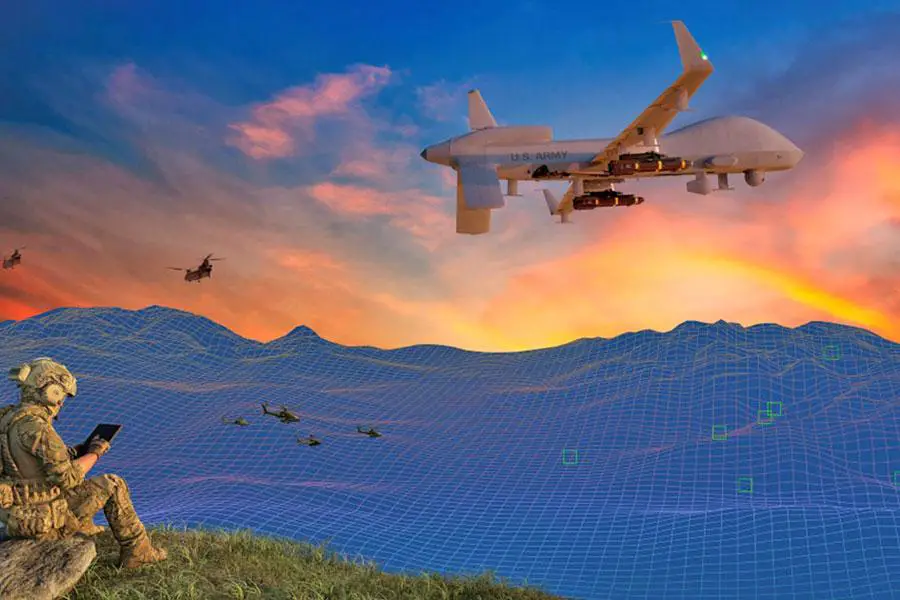US Army Unmanned Aircraft System Project Office and General Atomics Aeronautical Systems, Inc. (GA-ASI) successfully performed the first flight test of a new US Army Modular Open Systems Approach (MOSA) ground segment for the MQ-1C Gray Eagle Extended Range (GE-ER) Unmanned Aircraft System (UAS). The test took place at Fort Stewart in coordination with Product Manager Endurance Unmanned Aircraft Systems (PdM EUAS) and the B Co, 224th were part of the US Army-funded development efforts to upgrade and modernise the GE-ER.
This event enabled critical risk reduction for the Gray Eagle 25M UAS, which integrates new advanced datalinks, OA avionics suite, updated communications equipment, and new HFE 2.0 engine with Brushless Generator capabilities onto the GE-ER with GMSS as the new control segment. GMSS will be used for all aspects of GE-25M UAS flight testing beginning in 2023. GE-25M UAS is designed for Multi-Domain Operations with its OA avionics suite and future capabilities, which will include Air-Launched Effects (ALE), advanced teaming, and new sensor modalities.
“GA-ASI, in partnership with the PdM EUAS and third-party vendors, is at the forefront of demonstrating the technical maturity of Army’s MOSA vision,” said GA-ASI Vice President of Army Programs Don Cattell. “GE-25M showcases the Army MOSA Transformation Office-led paradigm shift in how business is done to enable high reuse and portability of capability development across the Army enterprise.”
GA-ASI successfully flight tested the new Ground Modernization Software Suite (GMSS) that was hosted on an Army prototype of a Gray Eagle Miniature Mission Interface (GEMMI) on Sept. 27, 2022. The flight test demonstrated the Future Airborne Capability Environment (FACE), a multi-vendor suite that commands the automated takeoff and landing, flight modes and sensor control of the GE-ER. GA-ASI provided major software components, or Units of Portability (UoPs), to enable robust, safe aircraft control and performed system integration of the overall software suite. This achievement represents a huge step forward for the Army’s MOSA efforts by demonstrating the technical maturity of Open Architecture (OA) software to be able to control UAS with adherence to the Army’s Scalable Control Interface (SCI) System Architecture.
~















